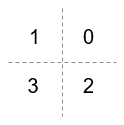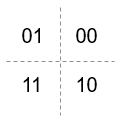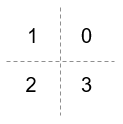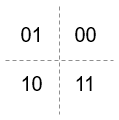comm.QPSKModulator
(削除予定) QPSK メソッドを使用した変調
説明
comm.QPSKModulator オブジェクトは、直交位相偏移変調 (QPSK) メソッドを使用して信号を変調します。出力は、変調信号のベースバンド表現です。
QPSK メソッドを使用して変調するには、次のようにします。
comm.QPSKModulatorオブジェクトを作成し、そのプロパティを設定します。関数と同様に、引数を指定してオブジェクトを呼び出します。
System object の機能の詳細については、System object とはを参照してください。
作成
構文
説明
qpskmod = comm.QPSKModulator は、QPSK メソッドを使用して入力信号を変調する System object™ を作成します。
qpskmod = comm.QPSKModulator( は、名前と値の引数を 1 つ以上使用してプロパティを設定します。たとえば、Name,Value)'OutputDataType'='single' は単精度データ型での変調信号値の出力を指定します。
qpskmod = comm.QPSKModulator(phase, は、Name,Value)PhaseOffset プロパティを phase に設定し、オプションで名前と値の引数を設定します。phase をラジアン単位で指定します。
プロパティ
オブジェクト関数
オブジェクト関数を使用するには、System object を最初の入力引数として指定します。たとえば、obj という名前の System object のシステム リソースを解放するには、次の構文を使用します。
release(obj)



